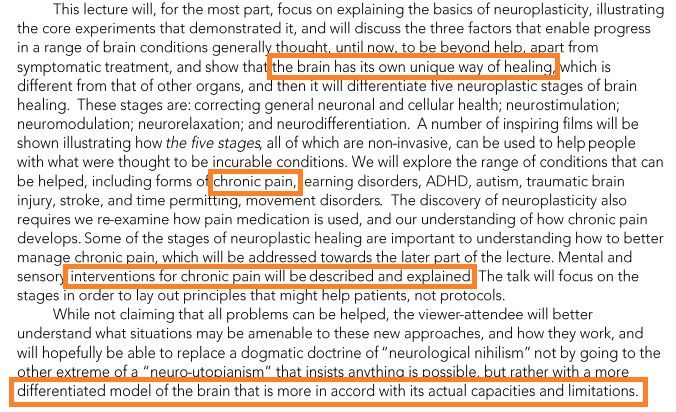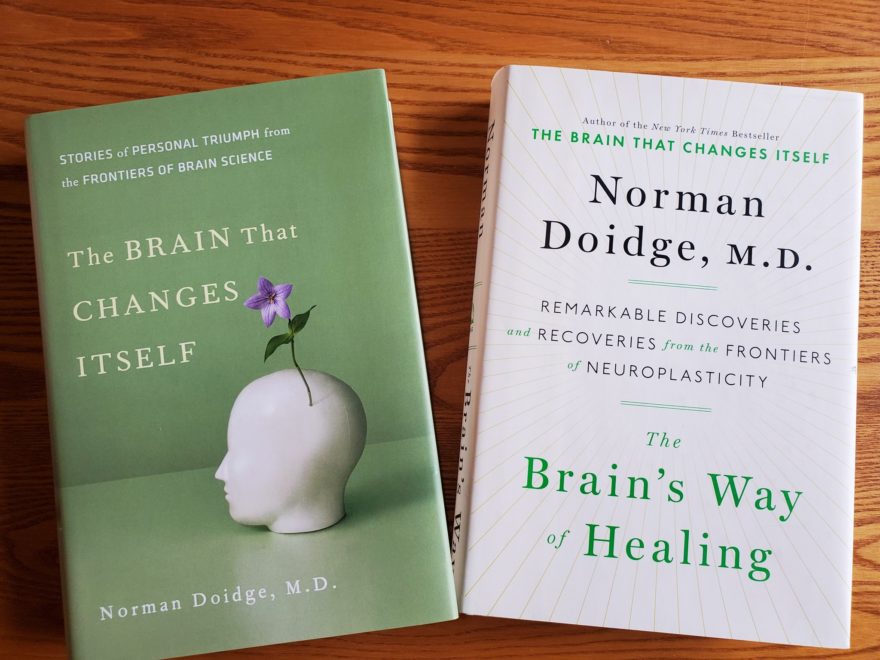Today, tomorrow, and Friday the Alberta Pain Society is presenting its 2020 virtual conference. Registration for this event is, very surprisingly, offered at no cost, and open to ‘people with lived experience’ (PWLE) of chronic pain. There’s still time to register for the next two days of this event; the link is included in the references below.(1)
By the way, PWLE is the newest term for what I usually refer to as ‘pain patients’, like myself. Until everyone becomes familiar with the new phrase, I’ll stick with the older one unless I’m quoting from a document, presentation, or website.
If you have a Twitter account, you can follow the conference hashtag at #PainAB2020. I’d love to attend and live-tweet each session, but my CRPS-related ‘mild cognitive impairment’ makes that impossible; I simply can’t concentrate for much more than an hour at a time, so my brain needs a break after each session that I do attend.
For anyone new to the blog, CRPS is Complex Regional Pain Syndrome, the rare autoimmune and neuro-inflammatory condition with which I’ve been living since 2016. It causes chronic pain – both neuropathic and joint pain – along with a host of other somewhat more bizarre symptoms. Some examples are changes to the skin colour or temperature of the affected area, in my case the right hand and forearm, and swelling for no apparent reason.
The conference
Getting back to the conference, its goal is:
to deliver a high quality, evidence-informed and diverse event to improve pain management strategies.
We strive to advocate for continuing professional development opportunities for all health care providers in Alberta and beyond.”(1)
My goal, through my blog posts over the next few days, is to provide a summary for my readers of what I think are the highlights of each presentation that I attend. Today I was only able to virtually attend two sessions before my brain lost its ability to concentrate or focus. Both sessions were presented by Dr. Norman Doidge, as Part I and Part II of what would otherwise have been a two-hour discussion.
I should mention that I have two of Dr. Doidge’s books at home; “The Brain that Changes Itself: Stories of Personal Triumph from the Frontiers of Brain Science”, and “The Brain’s Way of Healing: Remarkable Discoveries and Recoveries from the Frontiers of Neuroplasticity”.
If you’re interested in any of what I’ll be sharing below, he was summarizing information from these books. There was a note in the Conference agenda that this presentation would not be recorded, so it won’t be available even after this virtual event draws to a close.
The presenter
Norman Doidge, M.D., is a psychiatrist and psychoanalyst, essayist, and poet. He is best known for his writing on neuroplasticity and neuroscience…
His book, The Brain That Changes Itself, has been described by neurologist Oliver Sacks as “Fascinating…a remarkable and hopeful portrait of the endless adaptability of the human brain.” The London Times has written, “Brilliant…Doidge has identified a tidal shift in basic science…the implications are monumental.” The New York Times has written that The Brain That Changes Itself, has “implications…not only for individual patients with neurologic disease but for all human beings, not to mention human culture, human learning and human history.”…
The Brain’s Way of Healing, his second book, also a New York Times, and International Bestseller, also available in over 100 countries. Neuroscientist and neurologist V.S. Ramachandran, MD PHD has written it is, “Brilliant and highly original. Neurology used to be considered a depressing discipline with patients often displaying fascinating but essentially untreatable symptoms and disabilities. Drawing on the last three decades of research, Doidge challenges this view, using vivid portraits of patients and their physicians. The book is a treasure-trove of the author’s own deep insights and a clear bright light of optimism shines through every page.”(2)
The presentation
And now, finally, here are what I found to the highlights of Dr. Doidge’s two-part presentation today…
. His reference to old “neurological nihilism” view of the brain & the “huge huge problem” of medical error in current medicine spoke to my bioethics heart
. The fascinating work of neuroscientist V.S. Ramachandran was covered at some length, including a videos showing some of his research on mirror neurons and mirror box therapy for patients with phantom limb pain. You can read more about this research in a freely-accessible article in the journal “Medical History”:
“Through the use of his ‘mirror box’ many of Ramachandran’s patients experienced dramatic improvement in their conditions; it redressed the century-long therapeutic nihilism that patients with phantom limb pain had faced.
Indeed it is the therapeutic efficacy of his method that has done most to cement Ramachandran’s reputation, especially in popular circles.
His experimental treatment for upper-arm amputees has been featured prominently in his best-selling book, Phantoms in the Brain (1998)”(3)
. We each have a “use it or lose it” brain, so there’s a need for much more intensive physical therapy following stroke and other conditions that can lead to non-use of a limb. Targeted physical therapy can be used to reawaken dormant neurons, because we now know that these neurons don’t die, they become dormant
. Exercise improves the blood-brain barrier, which is another reason for which physical therapy can be so important to regaining function of a limb or addressing chronic pain conditions. This is another reason for which I consider exercise to be an important facet of my own pain management plan for CRPS. Along with the benefits of nature, and a feeling of taking back my life by doing things that I’ve always loved; outdoor sports
. I had already noted that, in his book “The Brain That Changes Itself”, Dr. Doidge refers to CRPS by its old name; Reflex Sympathetic Dystrophy(4) or RSD.
. Dr. Doidge states in “The Brain’s Way of Healing” that chronic pain “not only indicates illness; it is itself an illness”, which is an important point to remember – for patients as well as for physicians and other healthcare professionals
. It was impossible to summarize Dr. Norman Doidge’s excellent presentation on brain plasticity – neuroplasticity – so I marked up an excerpt of the session summary from the Conference website (1), to give you a taste of this talk!

. Learning about light therapy for traumatic brain injuries, including those suffered by veterans, was a topic dear to my heart. Not only because I was an Air Force Reserve officer many years ago, but because so many of my friends continue to serve in our military; both here in Canada and overseas.
. Dr. Doidge wrote in “The Brain that Changes Itself” – of mirror box therapy for CRPS – that: “Those who had the pain for longer than 2 years failed to get better” (5)
. He provided a summary of the history of pain science, noting that the previous Cartesian philosophy of pain medicine – with an emphasis on the separation between body and mind – was overturned by Melzack and Wall’s “Gate Theory” of pain.
For those of you interested in a historical perspective, the title of their ground-breaking article was “Pain Mechanisms: A New Theory. A gate control system modulates sensory input from the skin before it evokes pain perception and response”.(6)
Ronald Melzack is someone to whom I say a silent thank you each time I walk down the hospital corridor towards my pain clinic, although I never met him; he founded what’s now known as the Alan Edwards Pain Management Unit (AEPMU).
The multi-disciplinary AEPMU is housed at the Montreal General Hospital, within the McGill University Health Centre’s group of hospitals, research institutes, and other affiliated healthcare facilities.
It’s where I’ve presented to medical students and been quoted in news articles, as a ‘pain patient’ whose voice is valued.
. Also discussed was the work by Dr. Michael Moskowitz, who “has published several peer reviewed journal articles and textbook chapters with a focus upon the role that brain changes play in perpetuating persistent pain states. In 2007 he pioneered development of treatment approaches based upon the most advanced scientific principles of brain neuroplasticity and pain.”(7)
. Dr. Doidge covered previous research on the neuroplastic stages of brain healing and their importance for chronic pain:
. cellular health of neurons and glia
. neurostimulation
. neuromodulation
. neurorelaxation
. neurodifferentiation
. During the question and answer period, following his presentation, Dr. Doidge made the comment that “A good healthcare professional treats a ‘person with a problem’ and not just a problem”
. A scientific presentation is nothing without at least one acronym, and Dr. Moskowitz’s MIRROR approach was discussed as a tool to use neuroplasticity as an agent of positive change for people living with chronic pain:
. Motivation
. Intention
. Relentlessness
. Reliability
. Opportunity
. Restoration
. “It’s in the parasympathetic mode where we heal… not the fight or flight mode in which many chronic pain patients are stuck” due to their pain or past trauma. Patients may need to heal from trauma before their pain can be addressed
. Lowering inflammation within the entire body is very important for chronic pain, but also for the prevention of Alzheimers and other neurodegenerative diseases. Anti-inflammatory diets can be helpful to improve brain plasticity… Good news to me, because I already try to eat an anti-inflammatory diet for CRPS – which is both an autoimmune and a neuro-inflammatory disease!
. He noted that within appropriate chronic pain management, “no longer is the patient going to the physician or healthcare practitioner with a passive attitude, expecting that person to fix them… much more is being asked of the patient”
. There was a really interesting part of the presentation on what’s wrong with the “hero warrior” view in the militaristic metaphor of “battling disease”, or in viewing chronic pain as the enemy. I these views, the “patient is relegated to a passive role”, and worse, the “patient is the battleground”.
In closing
As you can see, Dr. Doidge crammed a lot of information into his two hours of presentation. I was thankful that there had been a break between the two sessions, or I’d have been unable to follow the entire talk due to my mild cognitive impairment. On that note, I need to go take a walk now – to let nature give my brain a rest.
As always, thanks for stopping by the blog. Please feel free to reach out on Instagram or Twitter if you have any comments or suggestions. I’ve had to disable the comments feature here on the blog because my brain simply can’t handle managing them anymore.
Stay safe, especially during this pandemic, and keep well. Look after your emotional health as much as your well-being, and I wish you things to smile about today ‘-)
References
(1) Alberta Pain Society. 14th Annual Pain Society of Alberta Conference. 2020. Website:
https://www.painab.ca/2020virtualconference
(2) Alberta Pain Society. 14th Annual Pain Society of Alberta Conference: 2020 Distinguished Speakers; Dr. Norman Doidge. 2020. Website:
https://www.painab.ca/2020virtualconference
(3) Guenther K. ‘It’s All Done With Mirrors’: V.S. Ramachandran and the Material Culture of Phantom Limb Research. Med Hist. 2016;60(3):342-358. doi:10.1017/mdh.2016.27. Available online at:
https://www.ncbi.nlm.nih.gov/pmc/articles/PMC4904333/
(4) Doidge, N. The Brain that Changes Itself: Stories of Personal Triumph from the Frontiers of Brain Science. Penguin Group (Canada), Toronto. 2007. Page 192.
(5) Doidge, N. The Brain that Changes Itself: Stories of Personal Triumph from the Frontiers of Brain Science. Penguin Group (Canada), Toronto. 2007. Page 194.
(6) Melzack, R. and Wall, P.D. Pain Mechanisms: A New Theory. Science. 19 Nov 1965; Vol. 150, Issue 3699, pp. 971-979. DOI: 10.1126/science.150.3699.971. Excerpt available online at:
https://science.sciencemag.org/content/150/3699/971
(7) Moskowitz, M. and Golden, M. Michael H. Moskowitz, MD, MPH – Biography. 2015. Website:
http://www.neuroplastix.com/styled-4/styled-4/mhm.html

